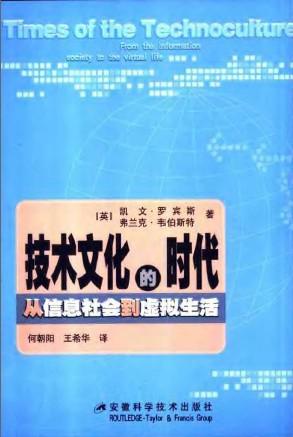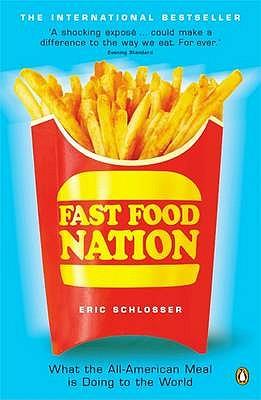欢迎来到相识电子书!
标签:文化
-
中国教育的文化基础
《中国教育的文化基础》探讨的问题是:为什么素质教育在我国如此难以推行?为什么学历主义在中办头脑中经久不衰?为什么职业技术教育在我国发展不起来?近些年来我国大力提倡教师和家长都要转为教育观念,但转变什么观念?旧的观念产生的根源是什么?新的观念又如何才能产生?改革开放以来,我们引进了许多外国的教育理论和思潮,哪些理论切合我国的国情?又如何使它本土化? -
谈龙说凤
就最早的意义说,龙与凤代表着我们古代民族最基本的两个单元——夏民族与殷民族,因为在[鲧死,化为黄龙,是用出禹]和[天命玄鸟降而生商]两个神话中,我们依稀看出,龙是原始夏人的图腾,凤是原始殷人的图腾,(我们说原始夏人和原始殷人,因为历史上夏殷两个朝代,已经离开图腾文化时期很远,而所谓图腾者,乃是远在夏代和殷代以前的夏人和殷人的一种制度兼信仰);因之把龙凤当作我们民族发祥和文化肇端的象征,可说是再恰当没有了。 -
日语汉字趣谈(日汉对照)
日语汉字趣谈(日汉对照),ISBN:9787562815488,作者:(日)高坂登(こぅさか·のぼる)著;陈雪,金伟译 -
苏州昆曲
《苏州昆曲》主要内容:昆曲艺术是以文学为基业而发迹辉煌、领袖艺苑的,它曾经拥有无比广阔的舞台。从周秦汉唐到宋元明清,数千年间的帝王将相、才子佳人、市民农夫、商贩徒卒,甚至僧尼道冠、神鬼妖魔,不论男女老少、忠奸智愚,纷纷被生旦净末丑粉墨登场,扮作、演绎其生活故事,诉说各自的喜怒哀乐。在文学创作的推动下,其生命的根须迅速蔓延伸展到中国社会历史的各个角落。作为一种近乎完美的声腔艺术,昆曲这个艺术载体似乎可以永无休止地随意装进任何文学内容。从16世纪中叶的梁辰鱼、张凤翼到17世纪末的洪异、孔尚任,在相当长的一段时间内,情形也确实是这样。直到有一天,昆曲在诸多因素的共同作用下走上了社会大舞台,演员中心制逐渐取代了剧本中心制,利用名家名作的知名度,通过改编文本削弱言志功能,增强娱人色彩,从而吸引为数众多的文化层次较低的观众群,成为昆曲从业人员谋生立命的必然抉择。正是这一导致案头与场上关系破裂的抉择换取了清中叶昆曲艺术的一度繁荣。 -
泉州习俗
本书资料来源,是作者拾取近代以来的社会历史遗存及其表现形式,综合作者的亲身经历、见闻、考察、调查、回忆,有的还是亲自践行过的。可以说,绝大部分是来自民间的纪录,有关文献资料仅作参考、核实之用,同时努力搜集有“存照”价值的文字资料予以印证。因此,本书也具有广集资料的特色。
本书的内容采集自民间,方言俚语俗字出现不少,因为是本地特有的,难以用对应的规范化词语替代。一些名物事象,也具有地方 -
花与中国文化
本书从“人花交感”这一题目入手,依次谈论了人格与花格的互相授受以及人花相融的境界、人从花的习染所兴发的感应,书中还配有大量精美的插图,既是珍贵资料,又可悦人眼目。 -
中国文字与书法
中国的文字源于何时?中国书法的发展经历了怎样的变迁?本书探索中国文字的源流,详细介绍各种书体及其沿革,评述各个时期的书法及理论发展,并系统讲解学书、习字的技法。阅读之后,既可以对我国文字与书法发展有宏观认识,又可以学得正确的习字方法。书后附录的历代书法名家小传及重要碑目可视为书法发展史的缩影,而书中配备的名家书法图片,亦可供读者作为学书的参考。 -
趣谈中国神仙
中国的神仙大体分为佛界诸神、道界诸神、冥界鬼神和民间俗神,本书力图从文化的视角来观察中国的神仙,所选取的神仙,大多是老百姓喜闻乐见的,其中有许多是在生活中经常接触到的。读罢本书,可以增添情趣,增加谈资,增广见闻,增长知识。 -
环球调查
《环球调查:中国记者讲述真实的外国》集纳了《环球时报》“记者调查”、“国门内外”、“经济观察”等版4年来的近百篇文章。这些调查都是由该报驻外记者亲自采访完成,内容包括对事件内幕的调查、对外国先进经验的调查、对中国人不熟悉的外国社会现象的调查。记者们通过对事件多角度分析,深入调查问题的核心,用众多的细节为读者讲述了一个真实的外国。 -
香港·文化·研究
這本文集的文章,有幾個共同的基調: ˙ 平民生活是焦點 ˙ 跨學科 ˙ 強調人文的科學 本文集的作者在以上提出的三個共同基調上,開展了各種細緻的研究,由歷史到現狀,既貼身也宏觀,講社會條件,也談庶民心事。文章反映了香港文化與社會多方面有趣又複雜的發展。它們指出香港在許多方面經歷了一個急劇現代化社會普遍面對的壓力和機會。它們同時肯定香港社會發展的軌跡,對本土文化有一種很特殊的、整體的規範。它令香港存在?種種可能在亞洲地區以至全球各地皆屬獨一無二的文化境況。要確切分析香港文化,就不能不了解這個軌跡、這些規範和特殊的境況。 本書編者: 吳俊雄 (香港大學社會學系副教授) 馬傑偉 (香港中文大學新聞與傳播學院副教授) 呂大樂 (香港中文大學社會學系教授) 「書內文章所涵蓋的範圍都是適時而重要,充分展現了研究者對於文化研究的觸覺。本書肯定有助讀者了解香港文化的動態及應用,亦對本土文化研究作為一項學科提供了豐富的材料和範例,以及進一步追尋的線索。」- 馬家輝 (引至香港大學出版社網站) -
70年代人记忆典藏
70年代人是什么?是宽敞明亮的教室里面“好好学习,天天向上”的标语;是简陋而又狭窄的木头桌椅上泾渭分明的“三八线”;是千篇一律的军绿色书包;是飘扬在胸前的红领巾;是“向雷锋同志学习”的大幅标语;是金贵的12英寸黑白电视机;是花花绿绿的小人书;是“花枝招展”的歌词本;是传递隐密恋情的纸条。风,轻轻地吹,夜,沉沉地睡,告别的年代,怀旧的理由,在水淼的笔下,流溢出来…… -
中国的神仙
从古到今的大部分神仙你都可以找到,只不过古代的神仙更为纯粹的是神仙,越接近近代,人升天变仙的就多了。 -
Fast Food Nation
CHEYENNE MOUNTAIN SITS on the eastern slope of Colorado’s Front Range, rising steeply from the prairie and overlooking the city of Colorado Springs. From a distance, the mountain appears beautiful and serene, dotted with rocky outcroppings, scrub oak, and ponderosa pine. It looks like the backdrop of an old Hollywood western, just another gorgeous Rocky Mountain vista. And yet Cheyenne Mountain is hardly pristine. One of the nation’s most important military installations lies deep within it, housing units of the North American Aerospace Command, the Air Force Space Command, and the United States Space Command. During the mid-1950s, high-level officials at the Pentagon worried that America’s air defenses had become vulnerable to sabotage and attack. Cheyenne Mountain was chosen as the site for a top-secret, underground combat operations center. The mountain was hollowed out, and fifteen buildings, most of them three stories high, were erected amid a maze of tunnels and passageways extending for miles. The four-and-a-half-acre underground complex was designed to survive a direct hit by an atomic bomb. Now officially called the Cheyenne Mountain Air Force Station, the facility is entered through steel blast doors that are three feet thick and weigh twenty-five tons each; they automatically swing shut in less than twenty seconds. The base is closed to the public, and a heavily armed quick response team guards against intruders. Pressurized air within the complex prevents contamination by radioactive fallout and biological weapons. The buildings are mounted on gigantic steel springs to ride out an earthquake or the blast wave of a thermonuclear strike. The hallways and staircases are painted slate gray, the ceilings are low, and there are combination locks on many of the doors. A narrow escape tunnel, entered through a metal hatch, twists and turns its way out of the mountain through solid rock. The place feels like the set of an early James Bond movie, with men in jumpsuits driving little electric vans from one brightly lit cavern to another. Fifteen hundred people work inside the mountain, maintaining the facility and collecting information from a worldwide network of radars, spy satellites, ground-based sensors, airplanes, and blimps. The Cheyenne Mountain Operations Center tracks every manmade object that enters North American airspace or that orbits the earth. It is the heart of the nation’s early warning system. It can detect the firing of a long-range missile, anywhere in the world, before that missile has left the launch pad. This futuristic military base inside a mountain has the capability to be self-sustaining for at least one month. Its generators can produce enough electricity to power a city the size of Tampa, Florida. Its underground reservoirs hold millions of gallons of water; workers sometimes traverse them in rowboats. The complex has its own underground fitness center, a medical clinic, a dentist’s office, a barbershop, a chapel, and a cafeteria. When the men and women stationed at Cheyenne Mountain get tired of the food in the cafeteria, they often send somebody over to the Burger King at Fort Carson, a nearby army base. Or they call Domino’s. Almost every night, a Domino’s deliveryman winds his way up the lonely Cheyenne Mountain Road, past the ominous DEADLY FORCE AUTHORIZED signs, past the security checkpoint at the entrance of the base, driving toward the heavily guarded North Portal, tucked behind chain link and barbed wire. Near the spot where the road heads straight into the mountainside, the delivery man drops off his pizzas and collects his tip. And should Armageddon come, should a foreign enemy someday shower the United States with nuclear warheads, laying waste to the whole continent, entombed within Cheyenne Mountain, along with the high-tech marvels, the pale blue jumpsuits, comic books, and Bibles, future archeologists may find other clues to the nature of our civilization — Big King wrappers, hardened crusts of Cheesy Bread, Barbeque Wing bones, and the red, white, and blue of a Domino’s pizza box. OVER THE LAST THREE DECADES, fast food has infiltrated every nook and cranny of American society. An industry that began with a handful of modest hot dog and hamburger stands in southern California has spread to every corner of the nation, selling a broad range of foods wherever paying customers may be found. Fast food is now served at restaurants and drive-throughs, at stadiums, airports, zoos, high schools, elementary schools, and universities, on cruise ships, trains, and airplanes, at K-Marts, Wal-Marts, gas stations, and even at hospital cafeterias. In 1970, Americaans spent about $6 billion on fast food; in 2000, they spent more than $110 billion. Americans now spend more money on fast food than on higher eeeeeducation, personal computers, computer software, or new cars. They spend more on fast food than on movies, books, magazines, newspapers, videos, and recorded music — combined. Pull open the glass door, feel the rush of cool air, walk in, get on line, study the backlit color photographs above the counter, place your order, hand over a few dollars, watch teenagers in uniforms pushing various buttons, and moments later take hold of a plastic tray full of food wrapped in colored paper and cardboard. The whole experience of buying fast food has become so routine, so thoroughly unexceptional and mundane, that it is now taken for granted, like brushing your teeth or stopping for a red light. It has become a social custom as American as a small, rectangular, hand- held, frozen, and reheated apple pie. This is a book about fast food, the values it embodies, and the world it has made. Fast food has proven to be a revolutionary force in American life; I am interested in it both as a commodity and as a metaphor. What people eat (or don’t eat) has always been determined by a complex interplay of social, economic, and technological forces. The early Roman Republic was fed by its citizen- farmers; the Roman Empire, by its slaves. A nation’s diet can be more revealing than its art or literature. On any given day in the United States about one-quarter of the adult population visits a fast food restaurant. During a relatively brief period of time, the fast food industry has helped to transform not only the American diet, but also our landscape, economy, workforce, and popular culture. Fast food and its consequences have become inescapable, regardless of whether you eat it twice a day, try to avoid it, or have never taken a single bite. The extraordinary growth of the fast food industry has been driven by fundamental changes in American society. Adjusted for inflation, the hourly wage of the average U.S. worker peaked in 1973 and then steadily declined for the next twenty-five years. During that period, women entered the workforce in record numbers, often motivated less by a feminist perspective than by a need to pay the bills. In 1975, about one-third of American mothers with young children worked outside the home; today almost two-thirds of such mothers are employed. As the sociologists Cameron Lynne Macdonald and Carmen Sirianni have noted, the entry of so many women into the workforce has greatly increased demand for the types of services that housewives traditionally perform: cooking, cleaning, and child care. A generation ago, three-quarters of the money used to buy food in the United States was spent to prepare meals at home. Today about half of the money used to buy food is spent at restaurants — mainly at fast food restaurants. The McDonald’s Corporation has become a powerful symbol of America’s service economy, which is now responsible for 90 percent of the country’s new jobs. In 1968, McDonald’s operated about one thousand restaurants. Today it has about twenty-eight thousand restaurants worldwide and opens almost two thousand new ones each year. An estimated one out of every eight workers in the United States has at some point been employed by McDonald’s. The company annually hires about one million people, more than any other American organization, public or private. McDonald’s is the nation’s largest purchaser of beef, pork, and potatoes — and the second largest purchaser of chicken. The McDonald’s Corporation is the largest owner of retail property in the world. Indeed, the company earns the majority of its profits not from selling food but from collecting rent. McDonald’s spends more money on advertising and marketing than any other brand. As a result it has replaced Coca-Cola as the world’s most famous brand. McDonald’s operates more playgrounds than any other private entity in the United States. It is one of the nation’s largest distributors of toys. A survey of American schoolchildren found that 96 percent could identify Ronald McDonald. The only fictional character with a higher degree of recognition was Santa Claus. The impact of McDonald’s on the way we live today is hard to overstate. The Golden Arches are now more widely recognized than the Christian cross. In the early 1970s, the farm activist Jim Hightower warned of “the McDonaldization of America.” He viewed the emerging fast food industry as a threat to independent businesses, as a step toward a food economy dominated by giant corporations, and as a homogenizing influence on American life. In Eat Your Heart Out (1975), he argued that “bigger is not better.” Much of what Hightower feared has come to pass. The centralized purchasing decisions of the large restaurant chains and their demand for standardized products have given a handful of corporations an unprecedented degree of power over the nation’s food supply. Moreover, the tremendous success of the fast food industry has encouraged other industries to adopt similar business methods. The basic thinking behind fast food has become the operating system of today’s retail economy, wiping out small businesses, obliterating regional differences, and spreading identical stores throughout the country like a self-replicating code. America’s main streets and malls now boast the same Pizza Huts and Taco Bells, Gaps and Banana Republics, Starbucks and Jiffy- Lubes, Foot Lockers, Snip N’ Clips, Sunglass Huts, and Hobbytown USAs. Almost every facet of American life has now been franchised or chained. From the maternity ward at a Columbia/HCA hospital to an embalming room owned by Service Corporation International — “the world’s largest provider of death care services,” based in Houston, Texas, which since 1968 has grown to include 3,823 funeral homes, 523 cemeteries, and 198 crematoriums, and which today handles the final remains of one out of every nine Americans — a person can now go from the cradle to the grave without spending a nickel at an independently owned business. The key to a successful franchise, according to many texts on the subject, can be expressed in one word: “uniformity.” Franchises and chain stores strive to offer exactly the same product or service at numerous locations. Customers are drawn to familiar brands by an instinct to avoid the unknown. A brand offers a feeling of reassurance when its products are always and everywhere the same. “We have found out . . . that we cannot trust some people who are nonconformists,” declared Ray Kroc, one of the founders of McDonald’s, angered by some of his franchisees. “We will make conformists out of them in a hurry . . . The organization cannot trust the individual; the individual must trust the organization.” One of the ironies of America’s fast food industry is that a business so dedicated to conformity was founded by iconoclasts and self-made men, by entrepreneurs willing to defy conventional opinion. Few of the people who built fast food empires ever attended college, let alone business school. They worked hard, took risks, and followed their own paths. In many respects, the fast food industry embodies the best and the worst of American capitalism at the start of the twenty-first century — its constant stream of new products and innovations, its widening gulf between rich and poor. The industrialization of the restaurant kitchen has enabled the fast food chains to rely upon a low-paid and unskilled workforce. While a handful of workers manage to rise up the corporate ladder, the vast majority lack full-time employment, receive no benefits, learn few skills, exercise little control over their workplace, quit after a few months, and float from job to job. The restaurant industry is now America’s largest private employer, and it pays some of the lowest wages. During the economic boom of the 1990s, when many American workers enjoyed their first pay raises in a generation, the real value of wages in the restaurant industry continued to fall. The roughly 3.5 million fast food workers are by far the largest group of minimum wage earners in the United States. The only Americans who consistently earn a lower hourly wage are migrant farm workers. A hamburger and french fries became the quintessential American meal in the 1950s, thanks to the promotional efforts of the fast food chains. The typical American now consumes approximately three hamburgers and four orders of french fries every week. But the steady barrage of fast food ads, full of thick juicy burgers and long golden fries, rarely mentions where these foods come from nowadays or what ingredients they contain. The birth of the fast food industry coincided with Eisenhower-era glorifications of technology, with optimistic slogans like “Better Living through Chemistry” and “Our Friend the Atom.” The sort of technological wizardry that Walt Disney promoted on television and at Disneyland eventually reached its fulfillment in the kitchens of fast food restaurants. Indeed, the corporate culture of McDonald’s seems inextricably linked to that of the Disney empire, sharing a reverence for sleek machinery, electronics, and automation. The leading fast food chains still embrace a boundless faith in science — and as a result have changed not just what Americans eat, but also how their food is made. The current methods for preparing fast food are less likely to be found in cookbooks than in trade journals such as Food Technologist and Food Engineering. Aside from the salad greens and tomatoes, most fast food is delivered to the restaurant already frozen, canned, dehydrated, or freeze-dried. A fast food kitchen is merely the final stage in a vast and highly complex system of mass production. Foods that may look familiar have in fact been completely reformulated. What we eat has changed more in the last forty years than in the previous forty thousand. Like Cheyenne Mountain, today’s fast food conceals remarkable technological advances behind an ordinary-looking façade. Much of the taste and aroma of American fast food, for example, is now manufactured at a series of large chemical plants off the New Jersey Turnpike. In the fast food restaurants of Colorado Springs, behind the counters, amid the plastic seats, in the changing landscape outside the window, you can see all the virtues and destructiveness of our fast food nation. I chose Colorado Springs as a focal point for this book because the changes that have recently swept through the city are emblematic of those that fast food — and the fast food mentality — have encouraged throughout the United States. Countless other suburban communities, in every part of the country, could have been used to illustrate the same points. The extraordinary growth of Colorado Springs neatly parallels that of the fast food industry: during the last few decades, the city’s population has more than doubled. Subdivisions, shopping malls, and chain restaurants are appearing in the foothills of Cheyenne Mountain and the plains rolling to the east. The Rocky Mountain region as a whole has the fastest-growing economy in the United States, mixing high-tech and service industries in a way that may define America’s workforce for years to come. And new restaurants are opening there at a faster pace than anywhere else in the nation. Fast food is now so commonplace that it has acquired an air of inevitability, as though it were somehow unavoidable, a fact of modern life. And yet the dominance of the fast food giants was no more preordained than the march of colonial split-levels, golf courses, and man-made lakes across the deserts of the American West. The political philosophy that now prevails in so much of the West — with its demand for lower taxes, smaller government, an unbridled free market — stands in total contradiction to the region’s true economic underpinnings. No other region of the United States has been so dependent on government subsidies for so long, from the nineteenth- century construction of its railroads to the twentieth-century financing of its military bases and dams. One historian has described the federal government’s 1950s highway-building binge as a case study in “interstate socialism” — a phrase that aptly describes how the West was really won. The fast food industry took root alongside that interstate highway system, as a new form of restaurant sprang up beside the new off-ramps. Moreover, the extraordinary growth of this industry over the past quarter-century did not occur in a political vacuum. It took place during a period when the inflation-adjusted value of the minimum wage declined by about 40 percent, when sophisticated mass marketing techniques were for the first time directed at small children, and when federal agencies created to protect workers and consumers too often behaved like branch offices of the companies that were supposed to be regulated. Ever since the administration of President Richard Nixon, the fast food industry has worked closely with its allies in Congress and the White House to oppose new worker safety, food safety, and minimum wage laws. While publicly espousing support for the free market, the fast food chains have quietly pursued and greatly benefited from a wide variety of government subsidies. Far from being inevitable, America’s fast food industry in its present form is the logical outcome of certain political and economic choices. In the potato fields and processing plants of Idaho, in the ranchlands east of Colorado Springs, in the feedlots and slaughterhouses of the High Plains, you can see the effects of fast food on the nation’s rural life, its environment, its workers, and its health. The fast food chains now stand atop a huge food- industrial complex that has gained control of American agriculture. During the 1980s, large multinationals — such as Cargill, ConAgra, and IBP — were allowed to dominate one commodity market after another. Farmers and cattle ranchers are losing their independence, essentially becoming hired hands for the agribusiness giants or being forced off the land. Family farms are now being replaced by gigantic corporate farms with absentee owners. Rural communities are losing their middle class and becoming socially stratified, divided between a small, wealthy elite and large numbers of the working poor. Small towns that seemingly belong in a Norman Rockwell painting are being turned into rural ghettos. The hardy, independent farmers whom Thomas Jefferson considered the bedrock of American democracy are a truly vanishing breed. The United States now has more prison inmates than full-time farmers. The fast food chains’ vast purchasing power and their demand for a uniform product have encouraged fundamental changes in how cattle are raised, slaughtered, and processed into ground beef. These changes have made meatpacking — once a highly skilled, highly paid occupation — into the most dangerous job in the United States, performed by armies of poor, transient immigrants whose injuries often go unrecorded and uncompensated. And the same meat industry practices that endanger these workers have facilitated the introduction of deadly pathogens, such as E. coli 0157:H7, into America’s hamburger meat, a food aggressively marketed to children. Again and again, efforts to prevent the sale of tainted ground beef have been thwarted by meat industry lobbyists and their allies in Congress. The federal government has the legal authority to recall a defective toaster oven or stuffed animal — but still lacks the power to recall tons of contaminated, potentially lethal meat. I do not mean to suggest that fast food is solely responsible for every social problem now haunting the United States. In some cases (such as the malling and sprawling of the West) the fast food industry has been a catalyst and a symptom of larger economic trends. In other cases (such as the rise of franchising and the spread of obesity) fast food has played a more central role. By tracing the diverse influences of fast food I hope to shed light not only on the workings of an important industry, but also on a distinctively American way of viewing the world. Elitists have always looked down at fast food, criticizing how it tastes and regarding it as another tacky manifestation of American popular culture. The aesthetics of fast food are of much less concern to me than its impact upon the lives of ordinary Americans, both as workers and consumers. Most of all, I am concerned about its impact on the nation’s children. Fast food is heavily marketed to children and prepared by people who are barely older than children. This is an industry that both feeds and feeds off the young. During the two years spent researching this book, I ate an enormous amount of fast food. Most of it tasted pretty good. That is one of the main reasons people buy fast food; it has been carefully designed to taste good. It’s also inexpensive and convenient. But the value meals, two-for-one deals, and free refills of soda give a distorted sense of how much fast food actually costs. The real price never appears on the menu. The sociologist George Ritzer has attacked the fast food industry for celebrating a narrow measure of efficiency over every other human value, calling the triumph of McDonald’s “the irrationality of rationality.” Others consider the fast food industry proof of the nation’s great economic vitality, a beloved American institution that appeals overseas to millions who admire our way of life. Indeed, the values, the culture, and the industrial arrangements of our fast food nation are now being exported to the rest of the world. Fast food has joined Hollywood movies, blue jeans, and pop music as one of America’s most prominent cultural exports. Unlike other commodities, however, fast food isn’t viewed, read, played, or worn. It enters the body and becomes part of the consumer. No other industry offers, both literally and figuratively, so much insight into the nature of mass consumption. Hundreds of millions of people buy fast food every day without giving it much thought, unaware of the subtle and not so subtle ramifications of their purchases. They rarely consider where this food came from, how it was made, what it is doing to the community around them. They just grab their tray off the counter, find a table, take a seat, unwrap the paper, and dig in. The whole experience is transitory and soon forgotten. I’ve written this book out of a belief that people should know what lies behind the shiny, happy surface of every fast food transaction. They should know what really lurks between those sesame-seed buns. As the old saying goes: You are what you eat. -
中国佛教图像解说
每当我们在参观各种佛教寺院,或是在游览观赏各地佛教名胜的时候,各种各样的形象生动、造型逼真、千姿百态的佛、菩萨造像常会令我们叹为观止。本书分序说、诸佛部、菩萨部、观音部、诸天部、明王部、罗汉部等部分,对佛教图像的起源、种类,以及各种各样的佛教图像进行了详细的介绍,使得读者对佛像这一具有很高艺术价值的宗教艺术作品能有清楚的认识。 -
世界神秘藏宝图
探宝,这一充满神秘和诅咒的成人童话,充满暴力和阴谋的曲折经历,走出都市丛林,伴随着我们现代的旅游来一次心灵历程。 本书介绍了大陆、海上、神话、古籍中那一份份被失落的神秘宝藏,一段段被湮没的精彩传奇,穿越时空,遍布世界,撷取历史的碎片。首次揭示了各宝藏之手绘秘图,描绘了圣殿骑士的神秘宝藏,拿破仑掳走的俄罗斯珍宝,羊皮卷上残留的文字,阿拉伯海盗的黄金岛屿,加勒比海暗礁中的运宝沉船之谜…… 此外,本书首次设立黄金珠宝指数、心动指数、综合指数;另送旅游近代宝小贴士和寻宝必备工具,让你在揽胜世界宝藏之余不禁欣喜心动,恨不得马上插上翅膀飞遍世界去体验这一惊心动魄的创举。 一起来吧,让我们追踪宝藏去旅游,让美梦成真! -
园林说译注
《园治》是我国17世纪杰出建筑学家、造园学家计成的不朽著作。 -
婚姻革命
本书以自古至今人类婚姻的演变为线索,从哲学和伦理学角度,阐述了人生中爱的位置、妇女解放、家庭等问题,并对未来婚姻的发展趋向做出预测和展望。 -
老井
朴尔敏,女,双鱼座的属羊人,常常以生于七十年代为荣。2001年毕业于南京医科大学,同年开始漫山遍野的游走史,并稀里糊涂混入传媒队伍。现供职于《东方文化周刊》,热衷于和方块字,照相机以及三教九流打交道。喜欢自由胜过一切花言巧语。外表随和,内心固执,自得其乐于莫名其妙的好情绪和坏脾气。
热门标签
下载排行榜
- 1 梦的解析:最佳译本
- 2 李鸿章全传
- 3 淡定的智慧
- 4 心理操控术
- 5 哈佛口才课
- 6 俗世奇人
- 7 日瓦戈医生
- 8 笑死你的逻辑学
- 9 历史老师没教过的历史
- 10 1分钟和陌生人成为朋友




















